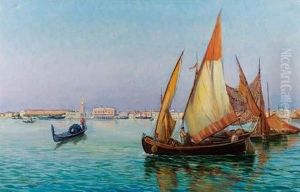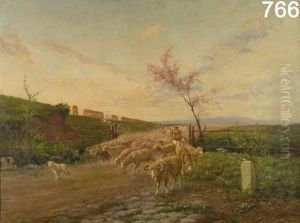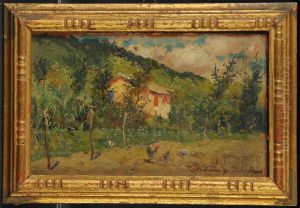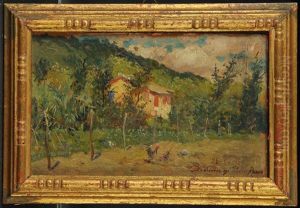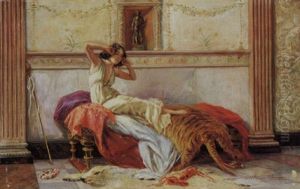Publio De Simoni Paintings
Publio De Simoni, born in 1840 in the Kingdom of Lombardy-Venetia, which was then part of the Austrian Empire and is now part of modern Italy, was a distinguished figure in the world of art during the late 19th and early 20th centuries. His life and career were marked by the broader socio-political changes sweeping through Europe, particularly the unification of Italy, which influenced much of his work and the context in which he operated as an artist.
De Simoni was primarily known for his contributions to painting and sculpture, disciplines in which he demonstrated exceptional versatility and skill. Educated in the prestigious academies of Italy, where he was deeply influenced by the Renaissance masters, De Simoni developed a style that was both reflective of classical traditions and responsive to the emerging currents of realism and later, symbolism. Throughout his career, he sought to capture the essence of human experience and emotion, blending technical precision with a profound sense of narrative.
In the 1860s and 1870s, as Italy was undergoing dramatic political and social transformations, De Simoni's work began to gain recognition for its embodiment of national identity and pride. His artworks often featured themes of liberation and unity, resonating with the Italian public and the wider movement for national unification known as the Risorgimento. This period was crucial in shaping De Simoni's artistic identity and in establishing his reputation among contemporary Italian artists.
By the turn of the century, De Simoni had solidified his position as a prominent figure in the Italian art scene. His later works ventured into more experimental territory, reflecting the shifting aesthetic sensibilities of the time, including the impact of impressionism and the beginnings of modernism. Despite these evolutions, his work remained deeply humanistic, characterized by a continued focus on the beauty and complexity of the human form and condition.
Publio De Simoni passed away in 1922, leaving behind a legacy that was celebrated in Italy and beyond. His contributions to art were recognized not only in the technical mastery of his craft but also in his ability to encapsulate the spirit of an era marked by profound change and aspiration. Today, his works are preserved in museums and galleries around the world, testament to the enduring appeal and relevance of his artistic vision.
